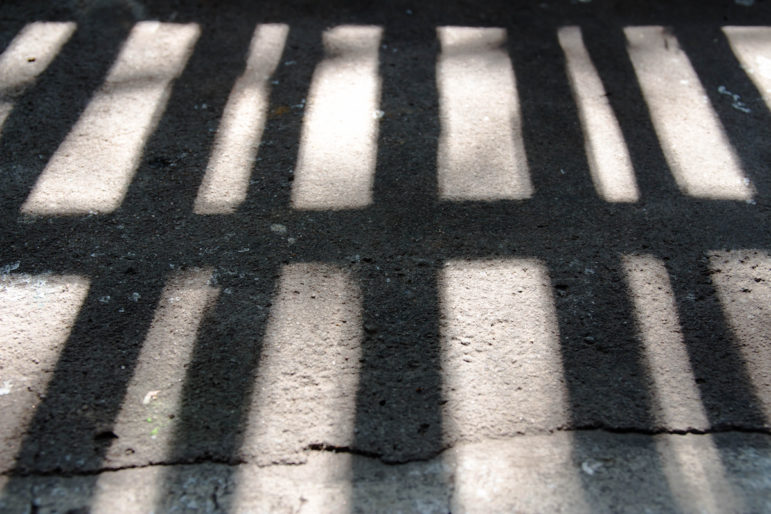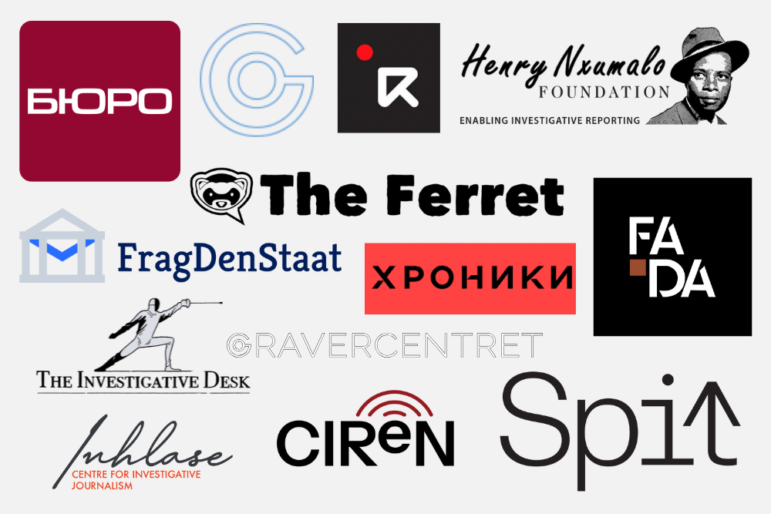

Investigating South Africa’s Prison for Profit
Violence has deep roots in South Africa, going back to colonial conquest and the apartheid state, which ruled by the gun and the whip. Its citizens continue to live in fear of violent crime at home and on the streets. Which is why the perpetrators of crime in the country — and particularly those who end up in prison — receive very little sympathy, and even less coverage in the national press.
But that’s exactly where journalist Ruth Hopkins has spent her last decade. Hopkins delved into the violence visited upon inmates, including the bureaucratic indifference they are subjected to by institutions falling under — in an Orwellian twist — the Department of Correctional Services. Very little about prison life in South Africa involves correction.
At the center of Hopkins’ work is the prison-industrial complex in South Africa, which crystallizes in the operations of British multinational G4S, the world’s largest private security contractor. The result of years of investigation, her recently-launched book “The Misery Merchants,” is also the subject of an award-winning Dutch documentary film “Prison for Profit,” produced by IFProductions and Java Films.
In South Africa, G4S is one of the country’s biggest private employers with some 15,000 people on its payroll. But the company works in about 90 countries and employs at least 570,000 people worldwide, running private prisons in South Africa, as well as the UK, and Australia, and semi-private facilities elsewhere, including the US and Palestinian territories. In 2019, its revenue hit £7.7 billion ($10.7 billion).
Reports of the company’s questionable dealings in private security and incarceration have been widely reported around the world. In 2012, the group was charged with the mismanagement of security for that year’s London Olympics. In 2015, a grand jury report detailed a string of criticisms in a Florida juvenile detention facility in the US, including “dilapidated buildings, unclean sanitary facilities, and undertrained and poorly equipped staff.” In 2019, the company announced its exit from the UK’s immigration and asylum sector following a 2017 undercover BBC video of a man being choked and verbally abused at one of its centers. That same year, a USA Today report found that G4’s US subsidiaries had hired or retained at least 300 employees with questionable records, including criminal convictions. And just a few weeks ago the Guardian reported that migrant workers in the United Arab Emirates were “forced to pay illegal fees” for jobs with the company.

Image: Documentary film poster for “Prison for Profit,” based on the work of Ruth Hopkins, and her book, right.
A Picture of Abuse
Hopkins, who was born in England, worked as investigative reporter with the Wits Justice Project (WJP), which focuses on criminal justice system reform, and is based at the University of Witwatersrand in Johannesburg. It was there that her work on G4S began.
At the time, she was inundated with letters from prisoners across South Africa complaining about abuse and torture. But one prison in particular continually stood out: the Mangaung Correctional Center (MCC), the country’s largest prison and the second largest private maximum-security prison in the world. Designed to accommodate up to 3,000 prisoners, the prison is in the Free State, a poor province with an unemployment rate of 41.2%, according to Statistics South Africa. For a long time, the premier of this province was the secretary-general of the ruling African National Congress (ANC), who currently faces corruption charges.
Hopkins worked for eight years to uncover the goings on at the prison. She found a place that was unsafe for both prisoners and guards; where disputes among rival gangs often ended in death. MCC is run by G4S as part of a consortium with so-called “Black empowerment” partners. (In South Africa, private firms wishing to do business with the South African government need to ensure that state contracts include a percentage for Black businesspeople.)
Over the years, Hopkins interviewed close to 100 inmates and 30 guards, and spoke to multiple sources from G4S as well as corrections officials. She confirmed the stories she was being told through leaked emails and contracts, video footage, eyewitness accounts, photos, and affidavits. One key piece of video footage was leaked to her by a prison guard horrified by what was taking place inside the prison.
This material painted a picture of abuse where prisoners are routinely assaulted by staff and subjected to electric shocks, forced to take anti-psychotic drugs, and are kept in dark isolation cells with no ventilation.
Sources and Paper Trails

Ruth Hopkins
A petite 47-year-old white woman with a head of red hair, Hopkins often stands out in her reporting environments. She meets her sources, sometimes at night, on her own, and often at their homes in townships. She recalls mysterious men following her around.
Hopkins said patience was key to developing trust with her sources. She let her contacts speak for as long as they felt the need to. Initially prison authorities allowed her access, which meant she had a constant supply of sources on the inside. She took her time to develop angles for her stories and over time established herself as an authority on what was taking place inside the prison.
But after her initial series stories about G4S and abuse in South African prison made international news, Hopkins says, a “mass meeting” of G4S prison staff was called where it was stated that she would never be allowed into the facility again. She reported one source said of the meeting: “We were told not to mention Ruth Hopkins or her work and to not engage with her.” She also received legal threats from G4S and its partners in South Africa, but those were never followed through.
Still more sources continued to come forward, and Hopkins was able to delve even deeper into the story.
For company records, she collaborated with a South African financial investigative reporter who assisted in making sense of the G4S prison contract. She relied on research undertaken by the Netherlands-based Centre for Research on Multinational Corporations (SOMO), a nonprofit investigating activities of multinational corporations around the world, which used Reuters Eikon and BVD Orbis database findings on the company. This research was particularly useful in providing financial information about G4S, such as financial results, debt, ownership, and business model. But, ultimately it was leaked emails and company contracts, mainly from internal whistleblowers, that proved to be most useful. Spending time developing sources was more effective than chasing the paper trail.
Hopkins has since founded the Private Security Network, a transnational network of investigative journalists. More than 20 reporters from Africa, the Americas, Asia, and Europe — many of whom have already written about G4S in their respective regions — are currently part of the network. She plans to transform the currently loose coalition into a formal collaboration that can monitor and investigate the private security industry around the world.
“These multinationals often interface with some of the most vulnerable people in the world — prisoners, migrants, people in war zones — and there are little or no democratic checks and balances because they can hide behind corporate confidentiality,” Hopkins said.
I asked Hopkins if she ever feared for her personal safety, and how she reconciled humanizing rapists and murderers in a country under siege from violent crime. She believes that talking to the prisoners about their conditions in prison, in fact, provided her protection, in that they relied on her to bring public attention to their plight. She didn’t focus on what got them into prison, but rather on their humanity as victims of abuse by those in power.
Not long after the release of the documentary, G4S announced that it plans to exit the South African incarceration industry in 2026 when its contract comes to an end. In response to the documentary, G4S said in a statement that those running the facility are “committed to the respect and protection of the human rights of those in its care and [that there was] … a zero tolerance policy towards the mistreatment of prisoners.”
It is unclear if Hopkins’s work has anything to do with this decision. But what is clear is that G4S’s global domination of the private prison industry has invited international scrutiny that seems unlikely to end any time soon.
Additional Reading
Should Journalists Do Advocacy? Here’s a Unique Approach Out of South Africa
Investigating Criminal Justice
Using Theater—and Zoom—to Tell Stories of Investigations into Solitary Confinement
 Palesa Morudu is a South African writer and columnist now based in Washington, DC. She writes occasionally on South Africa for The Washington Post, and for South Africa’s Business Day and Daily Maverick.
Palesa Morudu is a South African writer and columnist now based in Washington, DC. She writes occasionally on South Africa for The Washington Post, and for South Africa’s Business Day and Daily Maverick.









